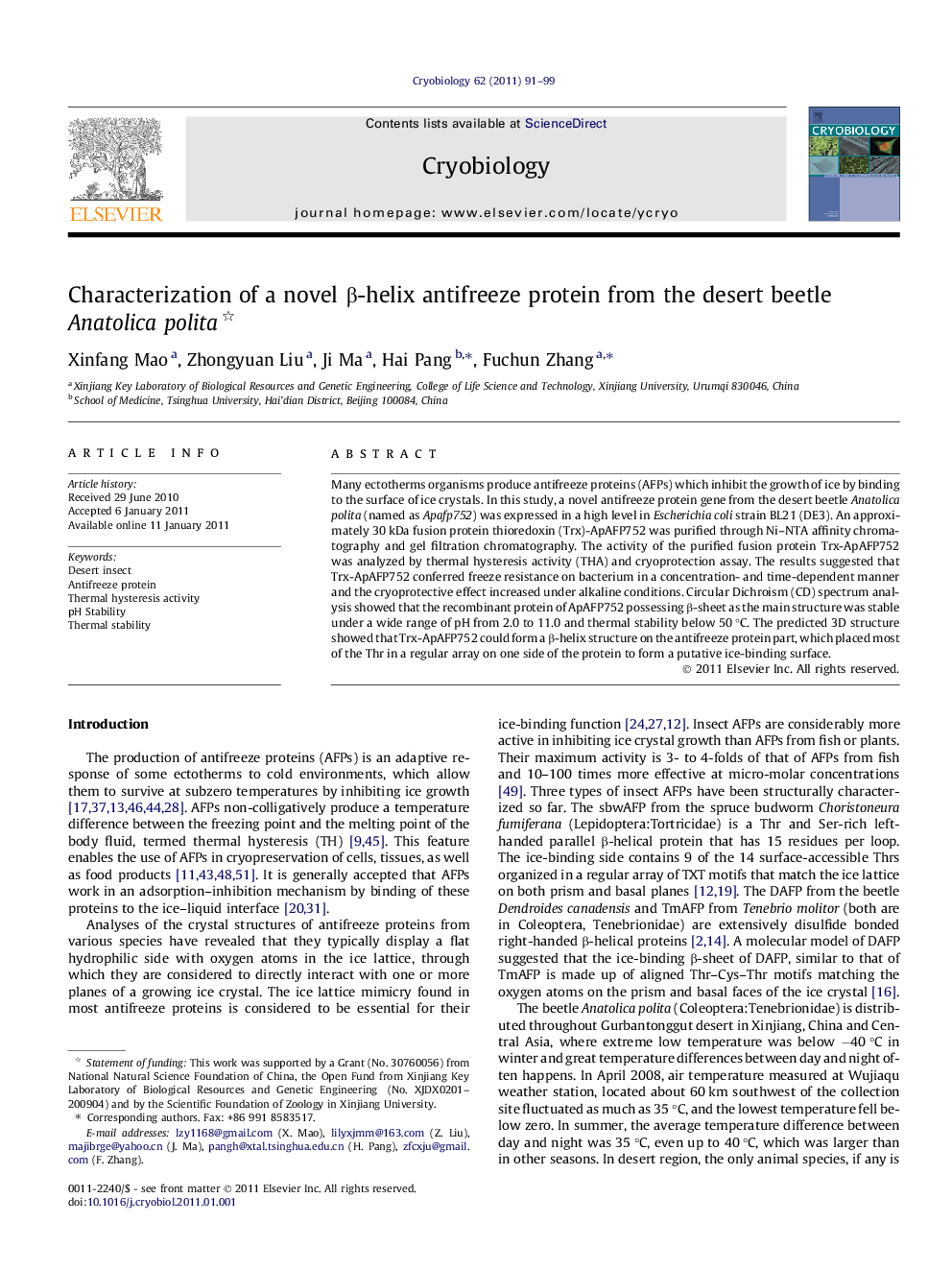| کد مقاله | کد نشریه | سال انتشار | مقاله انگلیسی | نسخه تمام متن |
|---|---|---|---|---|
| 2168468 | 1092897 | 2011 | 9 صفحه PDF | دانلود رایگان |

Many ectotherms organisms produce antifreeze proteins (AFPs) which inhibit the growth of ice by binding to the surface of ice crystals. In this study, a novel antifreeze protein gene from the desert beetle Anatolica polita (named as Apafp752) was expressed in a high level in Escherichia coli strain BL21 (DE3). An approximately 30 kDa fusion protein thioredoxin (Trx)-ApAFP752 was purified through Ni–NTA affinity chromatography and gel filtration chromatography. The activity of the purified fusion protein Trx-ApAFP752 was analyzed by thermal hysteresis activity (THA) and cryoprotection assay. The results suggested that Trx-ApAFP752 conferred freeze resistance on bacterium in a concentration- and time-dependent manner and the cryoprotective effect increased under alkaline conditions. Circular Dichroism (CD) spectrum analysis showed that the recombinant protein of ApAFP752 possessing β-sheet as the main structure was stable under a wide range of pH from 2.0 to 11.0 and thermal stability below 50 °C. The predicted 3D structure showed that Trx-ApAFP752 could form a β-helix structure on the antifreeze protein part, which placed most of the Thr in a regular array on one side of the protein to form a putative ice-binding surface.
Journal: Cryobiology - Volume 62, Issue 2, April 2011, Pages 91–99